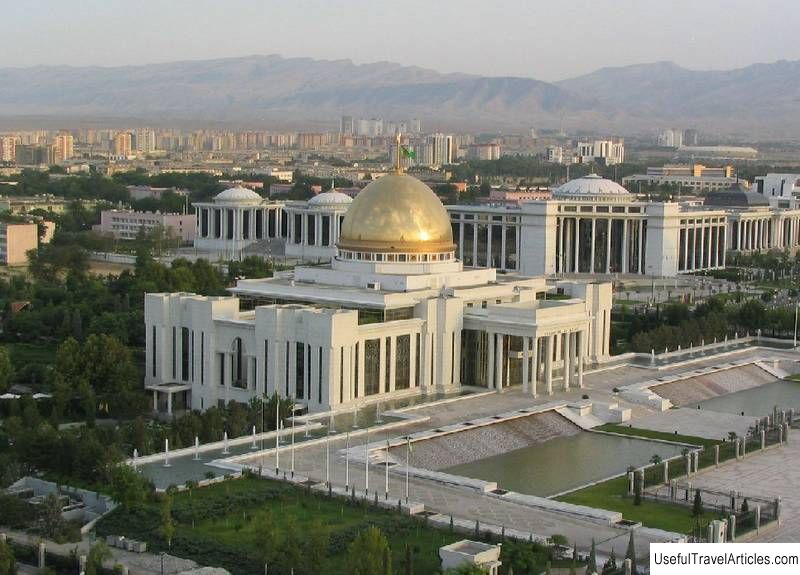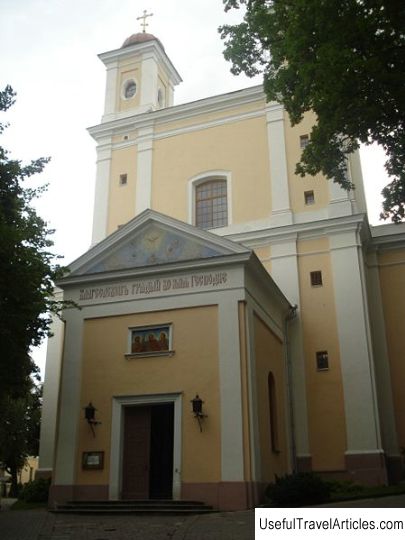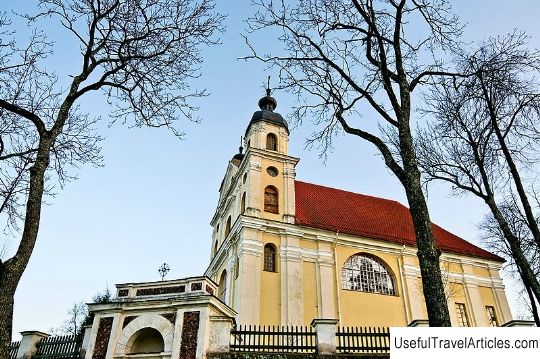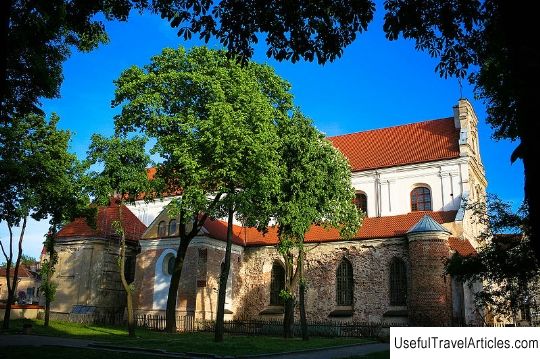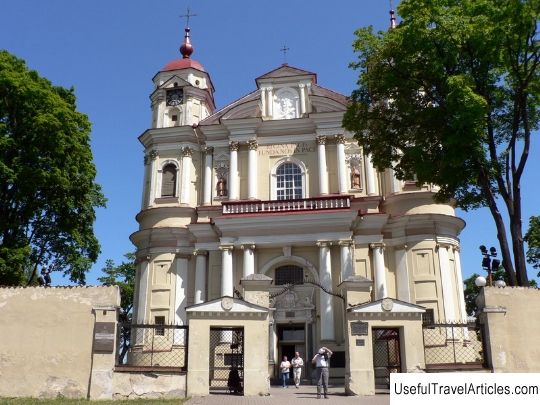Church of the Holy Spirit (Sventosios Dvasios baznycia) description and photos - Lithuania: Vilnius
Rating: 8,3/10 (690 votes) 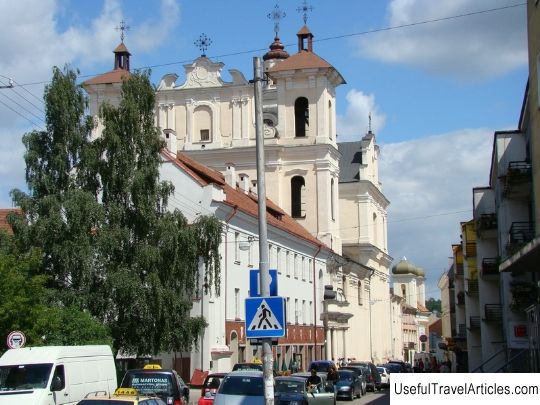
Church of the Holy Spirit (Sventosios Dvasios baznycia) description and photos - Lithuania: Vilnius. Detailed information about the attraction. Description, photographs and a map showing the nearest significant objects. The name in English is Sventosios Dvasios baznycia. Photo and descriptionOne of the monuments of late Baroque architecture in Vilnius is the Church of the Holy Spirit, (Dominican Church). The three-nave church, built in the form of a cross in plan, is relatively small in size (57 x 26 m) and can accommodate about 1400 parishioners. The church is located in the Old Town. Around the temple there is a Dominican monastery. The temple was built several times, the very first was wooden, built in the time of Gediminas, in 1441 a stone and larger church was rebuilt. Until the 16th century, the temple was a parish. In 1501, the temple was rebuilt at the initiative of King Alexander, a monastery was built nearby. The building of the temple was burned down and restored several times. Since 1679, thanks to the efforts of the abbot of the Dominican monastery, Mikhail Voinilovich, the small church was replaced by a new building. The newly built church was consecrated in 1668 by Bishop Konstantin Brzhostovsky. The fires of the eighteenth century brought considerable destruction to the church. So, during a fire in 1748, everything in the church burned out, even the organ, by the way, the first in Vilna, and the coffins from the burials under the church. However, by 1770, the temple and the monastery were rebuilt relatively quickly, acquiring a solemn decor in the Rococo style. During the war with the French, the temple, like many others, suffered from the French army. The Russian authorities abolished the temple in 1844, and the prisoners who participated in the 1863 uprising were kept in its premises. After the abolition of the monastery, the church becomes a parish church and operates throughout the 19th and 20th centuries. A dome with a lantern rises above the central nave of the church, the height of the dome is 51 m. The unusual location of the church along the street sets it apart from other temples in the city. The main facade is missing. The entrance from the street is decorated with a pediment with four Doric columns turned diagonally to the plane of the facade. The pediment is decorated with a cartouche depicting the coats of arms of Poland and Lithuania; the coat of arms of the Vasa dynasty is located above the arch. The entrance to the church is on the right side of a long corridor that leads to the premises of the former monastery. According to the assumptions of art scholars, the interior of the temple was created either by Francis Gopher or Johann Glaubitz. At the end of the 18th century, 16 Rococo altars were built in the temple. The main altar of the Holy Trinity, on the south side there are two altars of Jesus Christ and St. Dominic, the north side is decorated with the altars of Our Lady of Czestochowa and St. Thomas Aquinas. The most magnificent decoration of the others is the altar of the Lord of the Merciful, located in the southern part of the central nave. The vaults were painted by various artists from 1765 to 1770, baroque frescoes adorn the temple. Above the entrances to the side aisles in 1898-1899, artists from Tyrol painted four compositions; the vault of the south nave is decorated with a fresco depicting St. Anne. The temple has 45 valuable portraits and images of the 16-19 centuries. The organ, created in 1776 by Adam Casparini, is considered the oldest in all of Lithuania. Under the temple is a legendary labyrinth consisting of 9 Gothic cellars. The longest of them is 33 meters long. There are suggestions that the basements are two-level. In the 16th and 17th centuries, not only noblemen and monks, but also outstanding citizens were buried in the basements. The constant temperature and humidity of the cellars contributed to the mummification of the corpses. The dungeons aroused the burning interest of scientists, so the basements were often explored and described. For example, in the 19th century, research was carried out by Jozef Krashevsky, Eustachy Tyshkevich. More extensive research was carried out in the 60s of the 20th century. At one time, excursions were organized to the basements, but they were soon stopped due to the violation of the microclimate of the labyrinth.         Topic: Church of the Holy Spirit (Sventosios Dvasios baznycia) description and photos - Lithuania: Vilnius. |
